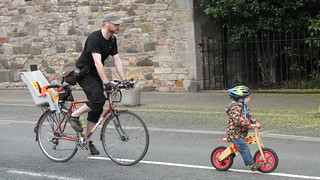Now that I come to think of it, wasn't the electricity network also owned by the state back then? As were most of the power stations and the coal industry which supplied the fuel for most of them.
Electricity generation and local distribution was almost entirely municipally and industrially owned and run at various levels. The North of Scotland Hydro Board was a bit of an exception being a nationalised electicity generation and distribution board for northern Scotland. National distribution was by the Central Electricity Board (fore-runner of the National Grid)
With the excention of the Hydro, it was nationalised in 1948 into regional generation, supply and distribution boards under the British Electricity Authority.
There was re-organisation in 1954 with the Hydro being formally incorporated into the nationalised sructure, and the South West and South East Scottish boards combined into the South of Scotland Electricity Board (SSEB. You can still see those letters on old bits of electricity infrastructure). The BEA dissapeared at this time and was replaced by the Central Electricity Authority (CEA.)
It was reogranised again in 1957 with generation in England and Wales being combined into the Central Electricity Generation Board (CEGB) under the Electricity Council (strategy / policy / governance body). Local supply and distribution in England and Wales was by area boards. In Scotland, it remained integrated with the North (Hydro) and South boards doing the generation, supply and distribution. The CEGB ran the National Grid.
This structure lasted almost 40 years until the CEGB was broken up and sold off in bits and pieces right throughout the 1990s. The North of Scotland Hydro became Scottish Hydro Electric (now part of SSE after merging with the former Southern Board) and SSEB became Scottish Power, who took over the Merseyside and Wales Board (MANWEB) and are now owned by the Spanish. SSEB didn't get to keep its nuclear plants. Perhaps they weren't trusted.
In a while somebody will get bored of the current set up and we'll have another one.
Coal was nationalised from 1947 for 40 years as the National Coal Board, then becoming the British Coal Corporation in 1987 in the run-up to privatisation. Its limited remains were sold off. The state-owned bit that remains is a quango called The Coal Authority that deals with subsidence and old mine shafts and clearing up spoil heaps and that sort of thing.
On the topic of oil and electricity, SSEB built an enormous oil-fired power station at Inverkip. The chimney is the tallest free-standing structure in Scotland. It started being built in the early 70s and the oil crisis intervened, meaning when it was complete it was too expensive to run, so 2/3 of its units were promptly mothballed. It only ever got to run as intended during the Miners Strike in 1984, after which it spent another 20 or so years in strategic reserve. I think they're taking it apart now.
The little power station at Methil was designed to run off the washings of the Fife coal field. It lost its source of fuel when that closed down in the mid 80s and after that I think it existed on bits of reclaimed bings until it too was mothballed and - about a month ago - demolished.


 posts
posts
